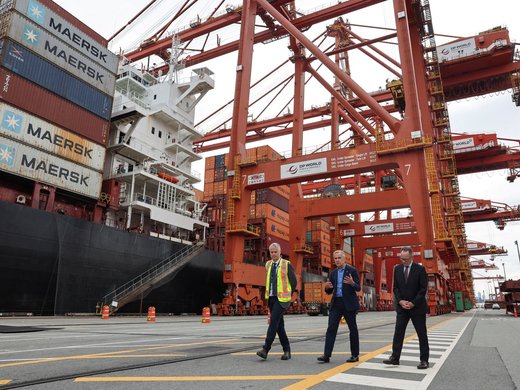This article was originally published by World Politics Review.
The resurgence of economic nationalism and protectionist trade policies since U.S. President Donald Trump’s return to the White House, particularly through the escalation and now de-escalation of tariffs against China and other key trade partners, has already triggered significant disruptions in global trade flows, with the potential for more in store. These measures, ostensibly aimed at correcting trade imbalances, led instead to retaliatory tariffs, volatility in global markets and a possible decline in cross-border investment. As supply chains fractured and industrial output slowed down, many economies faced the risk of recessionary pressures, revealing the fragility of global economic interdependence under political stress.
Amid these structural tensions, digital assets—most notably Central Bank Digital Currencies, or CBDCs, and stablecoins—have emerged as potential instruments of monetary and financial innovation that could help address some of the disruption caused by Trump’s tariffs and other systemic shocks to the global economy.
In this context, it is crucial to differentiate among the various digital financial instruments currently under consideration. CBDCs are digitally native, sovereign-issued representations of a nation’s fiat currency. Directly managed by central banks, they are designed to be legal tender, promising enhanced monetary sovereignty, greater financial inclusion and increased transaction transparency within a regulated framework. So far, three countries—Nigeria, the Bahamas and Jamaica—have launched CBDCs, while dozens of others, including China, Europe, India and Brazil, are in the process of piloting them.
On the other hand, stablecoins in their current iteration are privately issued digital tokens engineered to maintain a stable value by being pegged to fiat currencies or tangible commodities. They aim to integrate the stability of traditional currencies with the efficiencies of decentralized or hybrid financial architectures.
Digital forms of money have the capacity to address broader macroeconomic challenges, including the stabilization of economies during externally induced downturns.
Unlike speculative cryptocurrencies such as Bitcoin, both CBDCs and stablecoins are fundamentally designed to optimize payment efficiency and facilitate deeper integration within the broader financial system. The key technological differentiator lies in their programmable features and capacity for real-time data integration. This allows for conditional transactions such as targeted subsidies or capital controls, as well as rapid deployment of relief measures and enhanced systemic oversight—capabilities that become particularly relevant in an era of fractured global trade and recurring economic shocks.
Though initially conceived as enhancements to payment systems and financial inclusion, these digital forms of money have the capacity to address broader macroeconomic challenges, including the stabilization of economies during externally induced downturns.
The imposition of tariffs by the U.S. under the Trump administration, particularly against China, marked a pronounced shift away from multilateral trade norms. Although the ramifications of these tariffs are yet to be fully determined, it can be assumed that the world will not merely witness a slowdown in bilateral trade between the U.S. and China, but a broader disruption of global supply chains, with ripple effects across both advanced and emerging economies.
Trade wars of this magnitude have historically triggered contractionary effects: depressed export volumes, reduced industrial output and heightened input costs. Faced with uncertainty and fluctuating trade terms, businesses often defer investment decisions, amplifying economic stagnation. Simultaneously, market volatility and currency depreciation, particularly in trade-exposed economies, can lead to capital flight and financial instability.
The economic consequences of these disruptions are often recessionary in nature. However, traditional monetary and fiscal responses are not always agile or evenly effective in this context, especially in economies with limited policy space. This challenge explains the growing interest in alternative instruments, including digital assets, to buffer against such externally induced shocks.
Digital assets have grown in prominence as governments and private actors seek to modernize payment infrastructures and increase financial inclusion. However, their potential extends beyond transactional efficiency. Their programmable features and capacity for real-time data integration offer possibilities for more targeted monetary interventions, including during times of economic distress. This functional flexibility adds a useful tool to policymakers’ kit in efforts toward macroeconomic stabilization, particularly in crisis scenarios shaped by trade and financial dislocations.
In recessionary environments precipitated by trade wars, digital assets offer several novel mechanisms for economic stabilization. First, CBDCs provide a direct and programmable channel for monetary stimulus. Governments could deploy targeted transfers to households or businesses without relying on intermediaries, thereby accelerating the impact of monetary policy and enhancing its precision. This approach could prove especially effective in periods of constrained demand and institutional bottlenecks.
Second, both CBDCs and stablecoins can reduce friction in cross-border transactions. Trade tensions often exacerbate currency volatility and disrupt international settlements. Because they are pegged to low-volatility assets, stablecoins may serve as interim units of account or stores of value in jurisdictions facing capital flight or depreciating domestic currencies. CBDCs with cross-border interoperability features could facilitate bilateral or regional trade outside traditional dollar-based systems, thereby insulating economies from external financial pressures.
Third, the data-rich nature of digital asset platforms offers real-time economic insights, enabling more responsive and adaptive policy interventions. Together, these capabilities suggest that digital assets could serve as complementary instruments within broader countercyclical economic strategies.
Yet, despite their potential, the deployment of digital assets as macroeconomic tools is fraught with structural, regulatory and geopolitical limitations. Most centrally, institutional readiness varies significantly across jurisdictions. Implementing a secure, scalable and resilient CBDC infrastructure demands not only technological capacity but also robust legal and regulatory frameworks—many of which remain underdeveloped.
Though stablecoins are more rapidly deployable, the fact that they are issued by private-sector nonstate actors raises concerns about monetary sovereignty and regulatory arbitrage. Their proliferation could undermine capital controls and erode central banks’ ability to conduct effective monetary policy, particularly in emerging markets. Additionally, the absence of standardized global oversight increases the risk of financial fragmentation and illicit financial flows.
Geopolitically, the asymmetric adoption of digital currencies could deepen global financial imbalances. If major powers develop CBDCs with extraterritorial reach, smaller economies may face new forms of dependency or exclusion. Finally, unresolved issues around privacy, surveillance and cybersecurity continue to represent challenges, undermining public trust and long-term scalability. These risks underscore the necessity of cautious, coordinated implementation strategies, at a time when multilateral cooperation is being strained, not least by the Trump administration’s trade war.
CBDCs and stablecoins hold promise as supplementary instruments for mitigating the economic fallout of trade war-induced recessions. Their programmable design, transaction efficiency and potential for policy precision offer meaningful advantages in crisis contexts where traditional tools may falter. However, issues such as technological infrastructure gaps, privacy concerns, cross-border friction and uneven regulatory readiness continue to impede their widespread deployment.
For the advantages offered by digital assets to be fully realized, these significant limitations around adoption, interoperability and regulatory clarity must first be addressed. As digital assets continue to evolve, their strategic utility will hinge on careful governance, institutional capacity building and multilateral coordination to ensure they support, rather than destabilize, an increasingly fragile global economic order.




